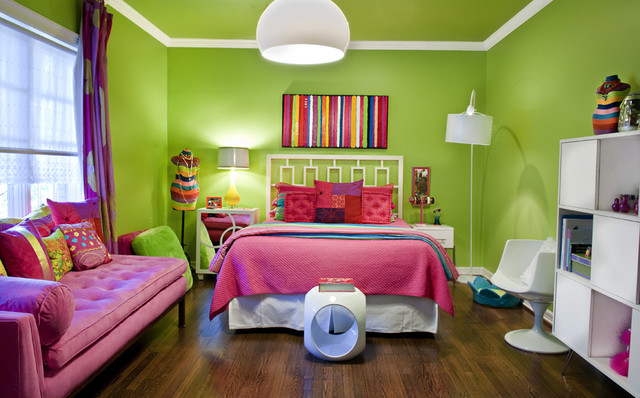No Neutral Ground? Why the Color Camps Are So Opinionated
In a recent poll on Houzz, 44 percent of Houzzers said they liked neutrals, 15 percent said they liked lots of bold color and 41 percent said they liked both. As the poll shows, many people do say they like both neutrals and color, but most of us still have strong feelings about the topic.
"Neutrals always feel safe to people, as indeed they are," says Leatrice Eiseman, executive director of the Pantone Color Institute. "Color doesn't behave," adds James Martin, president of Color People. "You can never count on it to do what you want." The split personality of these two color camps certainly has something to do with palette preferences, but why else is this such a hot-button subject?
|
A Passion for Color
Among all the other controversial topics on Houzz, why does this one continually rise to the surface? "Color is so intrinsic to our lives," says Leslie Harrington, executive director of The Color Association of the United States. "Every waking — and in some cases sleeping — moment, you are interacting with color." The fact that most people have an intimate relationship with color makes it an easy subject to have an opinion on — particularly when the options (neutrals and bold colors) are polar opposites. |
4 hot color trends to play with
But sometimes our opinion isn't completely our own. "We're sort of taught that understated is tasteful and overstated is not," says Martin. "I think a lot of people really like color but have questions about how it will be perceived."
Mark Woodman, president of the Color Marketing Group, agrees. "What people seem to fear the most is other people's negative opinions," he says.
|
Negative but misinformed
experiences with colors — bold or neutral — can have an effect as well.
For those who tend to stick to neutrals, adding a big pop of color
somewhere random probably won't feel right. "You might think that you
made a color mistake," says Harrington. "But you didn't. Live with it
first and add more color."
|
|
Neutralizing Neutrals
There's a reason most people prefer neutrals in their homes: They're usually easier to live with. Neutrals "are the perennials of color — not subject to trends as much as brighter colors, timeless and dependable," says Eiseman. The dependable side of neutrals makes it a safe choice for big-budget items like sofas and more permanent material choices — especially for those who can't make up their minds. Color tends to be a big commitment that needs a lot of confidence, so neutrals work well for people who want to change their accent colors frequently. "Color just isn't for everyone," says interior designer Ellinor Ellefson. 4 New Neutrals for the New Year |
|
Controversial Colors
"Sometimes people are afraid of color because they can't visualize it," says interior designer Marlene Wangenheim. Envisioning a bold purple on your walls can be difficult when your home is all gray and white. So often those who do chose color already have quite a bit of experience using it. Color tends to get better with use and experience. "The more color you have, the more color you can use with it," says Martin. "With monochromatic rooms, you'll find there is only a very slim margin for error when selecting a color or even neutrals to go with it. With color, you become liberated." |
"Is it possible for color to go awry? Absolutely," says Woodman. "I like to think, however, that there is no wrong color, just color used wrong."






